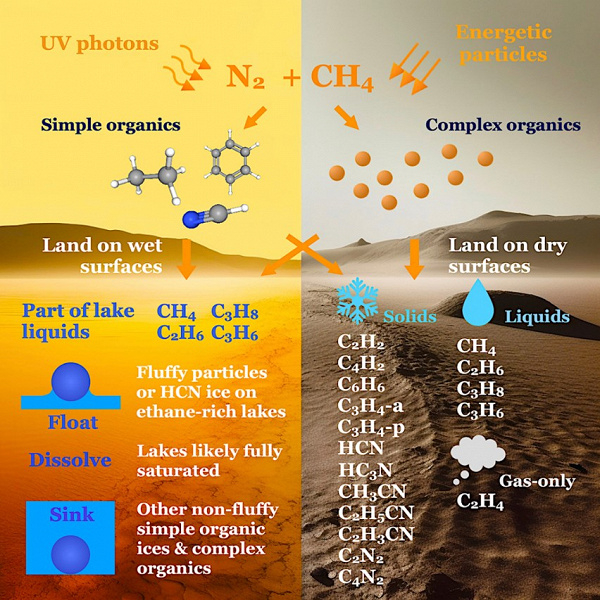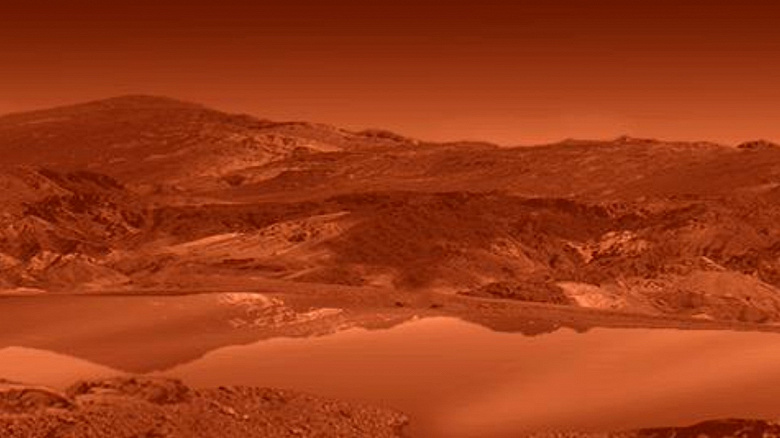New research reveals mechanisms of formation and movement of mysterious formations on the surface of Saturn's moon
The «magical islands»located on the surface of Titan most likely they are hollow icebergs made of hydrocarbonate ice. That's the conclusion scientists reached in a new study, rejecting previous ideas that they were gas bubbles.
Titan, Saturn's largest moon, is covered in a hazy orange atmosphere that is 50% denser than Earth's and rich in methane and other carbon-based organic molecules. Its surface is covered with dark dunes of organic material and seas of liquid methane and ethane. Another feature is that on radar images they appear as bright spots moving across the surface of the seas and can last from several hours to several weeks or longer.
Scientists first noticed these ephemeral «magical islands» in 2014 during the «Cassini-Huygens» mission and since then they have been trying to find out their origin. Previous studies have suggested they could be phantom islands caused by waves, or real islands of suspended solids, floating solids or bubbles of nitrogen gas. Xinting Yu, a planetary scientist and lead author of the new study, wondered if a more careful analysis of the relationships between Titan's atmosphere, liquid lakes and solid materials deposited on the moon's surface might reveal the cause of these mysterious islands.
«I wanted to explore whether “magic islands” actually be organic matter floating on the surface, like pumice that can float on the surface of water», — said Yu.
The upper layer of Titan's atmosphere is rich in a variety of organic molecules. These molecules can cluster, freeze, and fall onto Titan's surface, including its smooth rivers and lakes of liquid methane and ethane, with waves only a few millimeters high.

Yu and her team became interested in the fate of these “organic lumps” ending up in Titan's hydrocarbonate lakes. They found that these moving lumps do not dissolve when they enter a liquid, since the lakes are already saturated with organic particles.
«For us to be able to see the “magical islands”, they must stay afloat for some time», — said Yu.
Titan's lakes and seas are primarily composed of methane and ethane, both of which have low surface tension, making it more difficult for solids to float. Models show that most frozen substances are too dense and the surface tension is too low to create «magical islands» on Titan, unless «lumps» do not have a porous structure.
If the ice lumps are large enough and have the right ratio of voids to thin tubes, then liquid methane can seep out slowly enough for the lumps to linger on the surface.
Yu's modeling showed that individual clumps are likely too small to float individually on the surface. But if enough clumps accumulate near the shore, large pieces can break off and float away, just as glaciers break off on Earth. The combination of the larger size and proper porosity of these organic glaciers may explain the «magic islands» phenomenon. Titan.
Besides the «magical islands», a thin layer of frozen substances covering the seas and lakes of Titan may explain the unusual smoothness of liquid forms. So the results of this study can explain two secrets of Titan at once.

